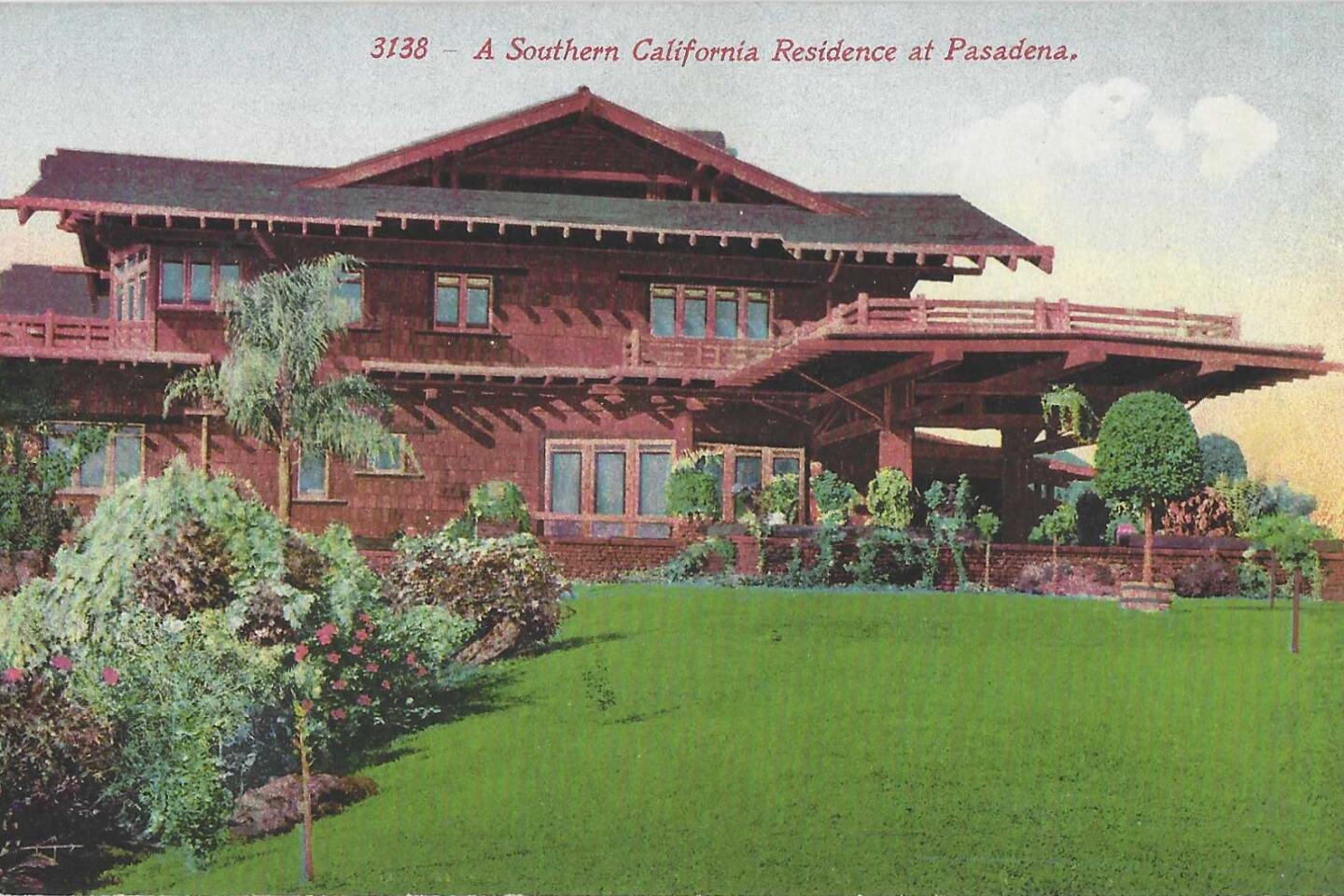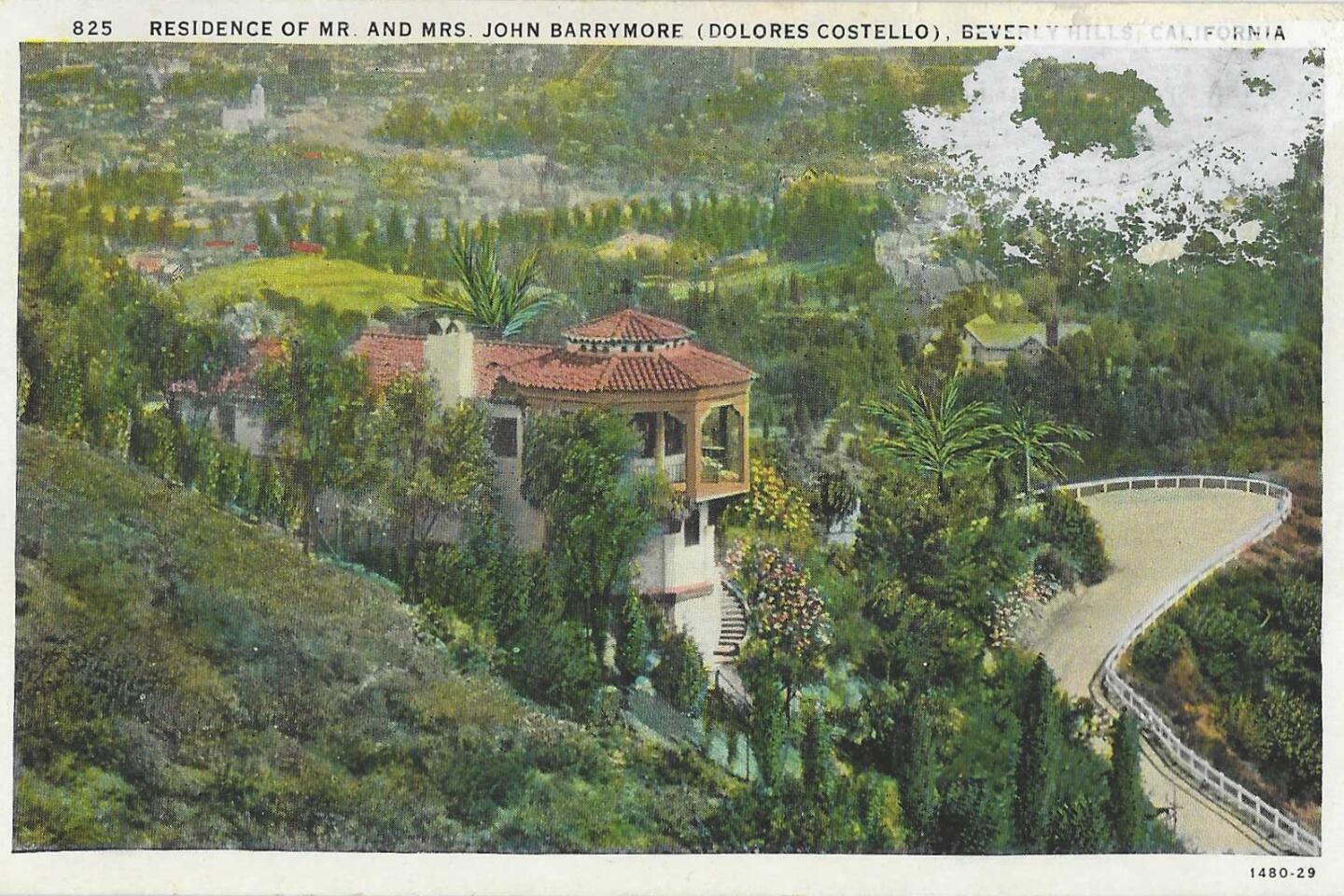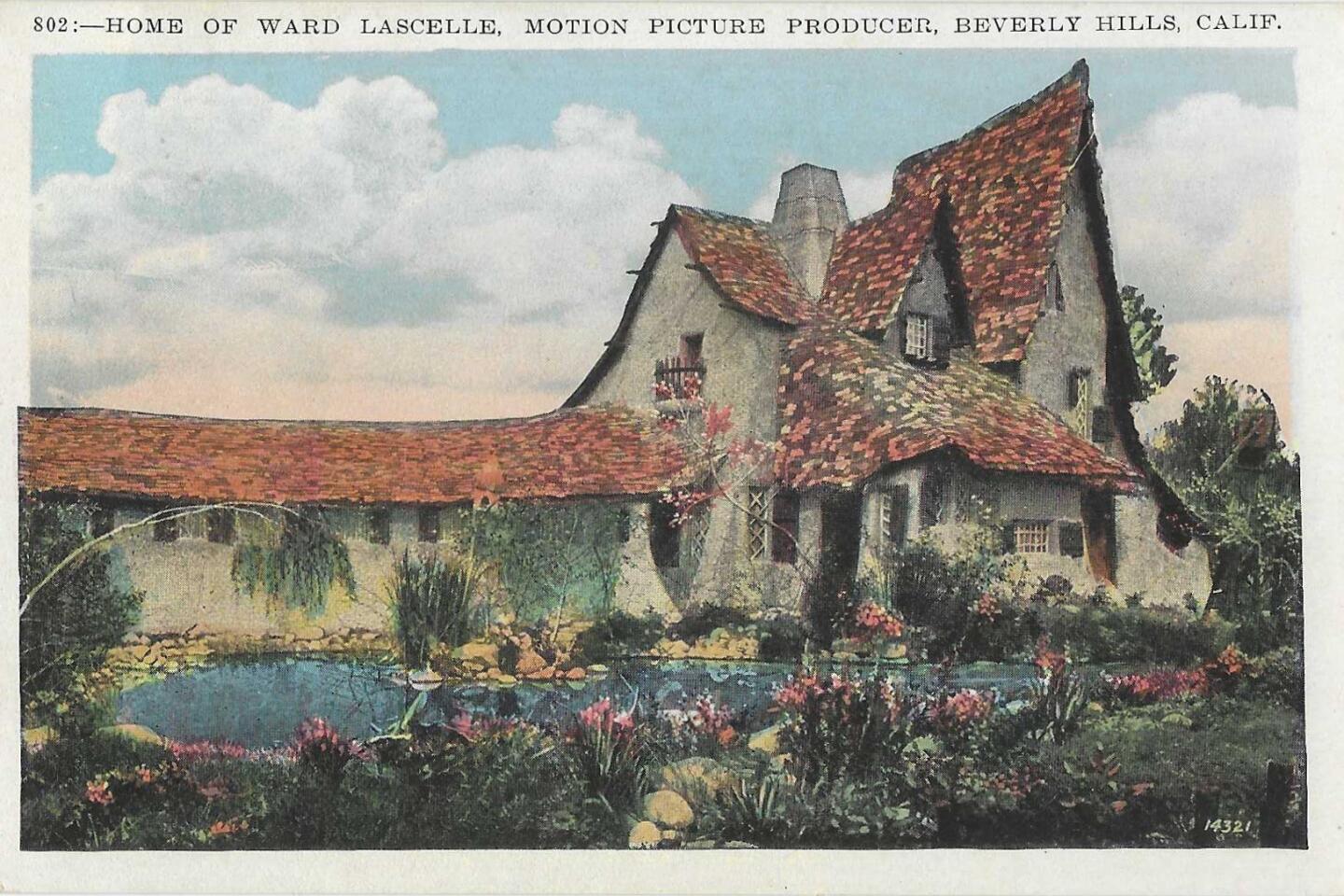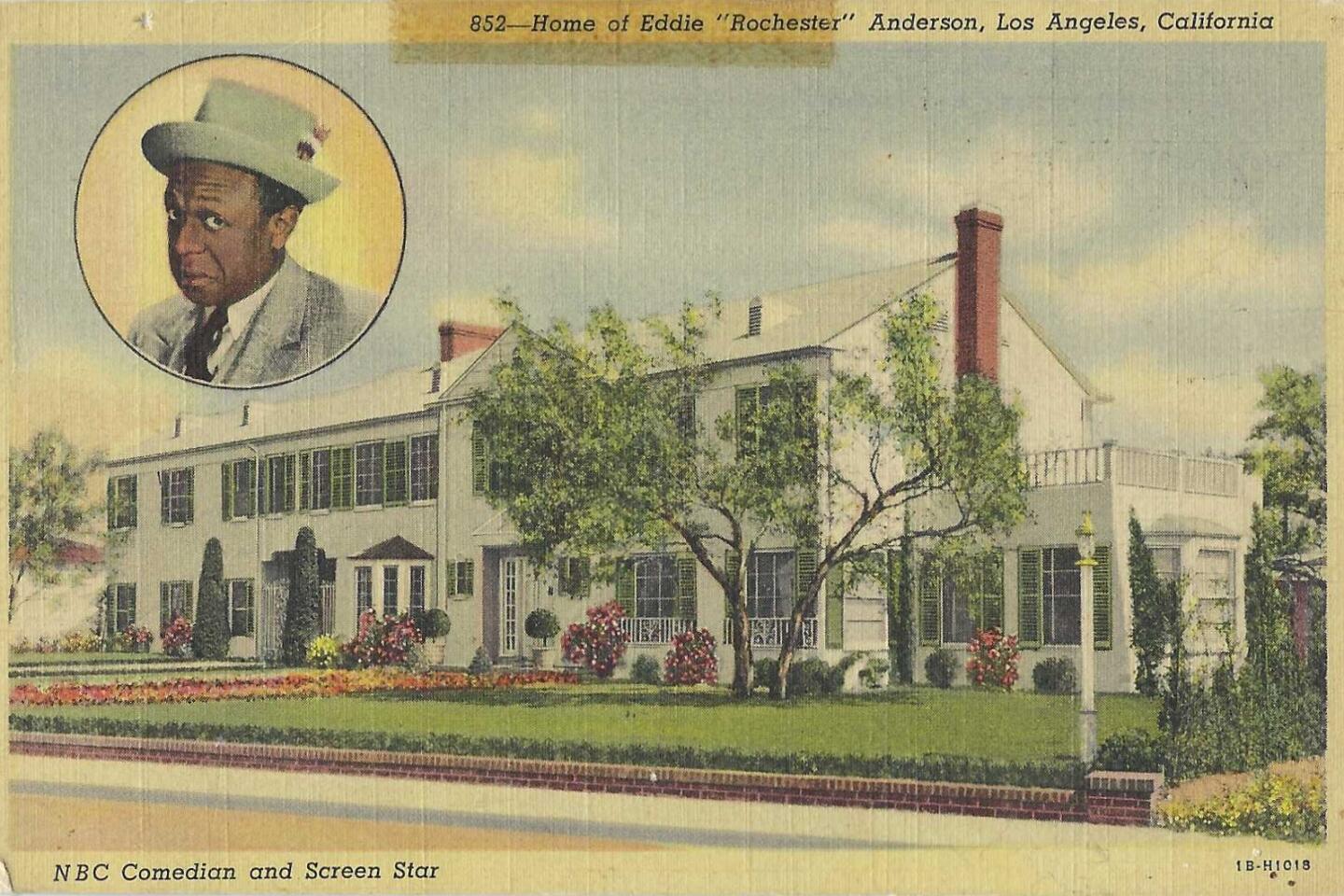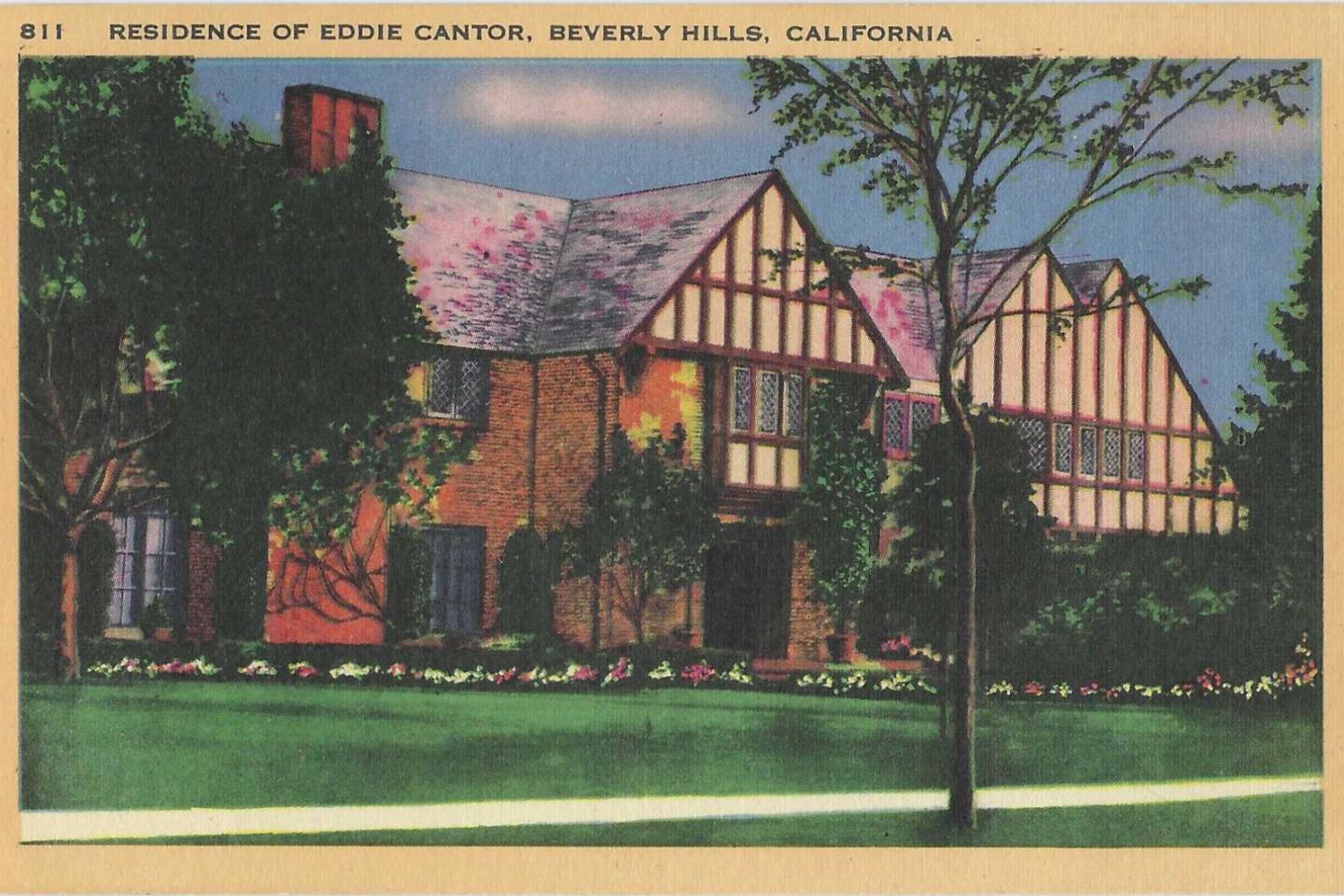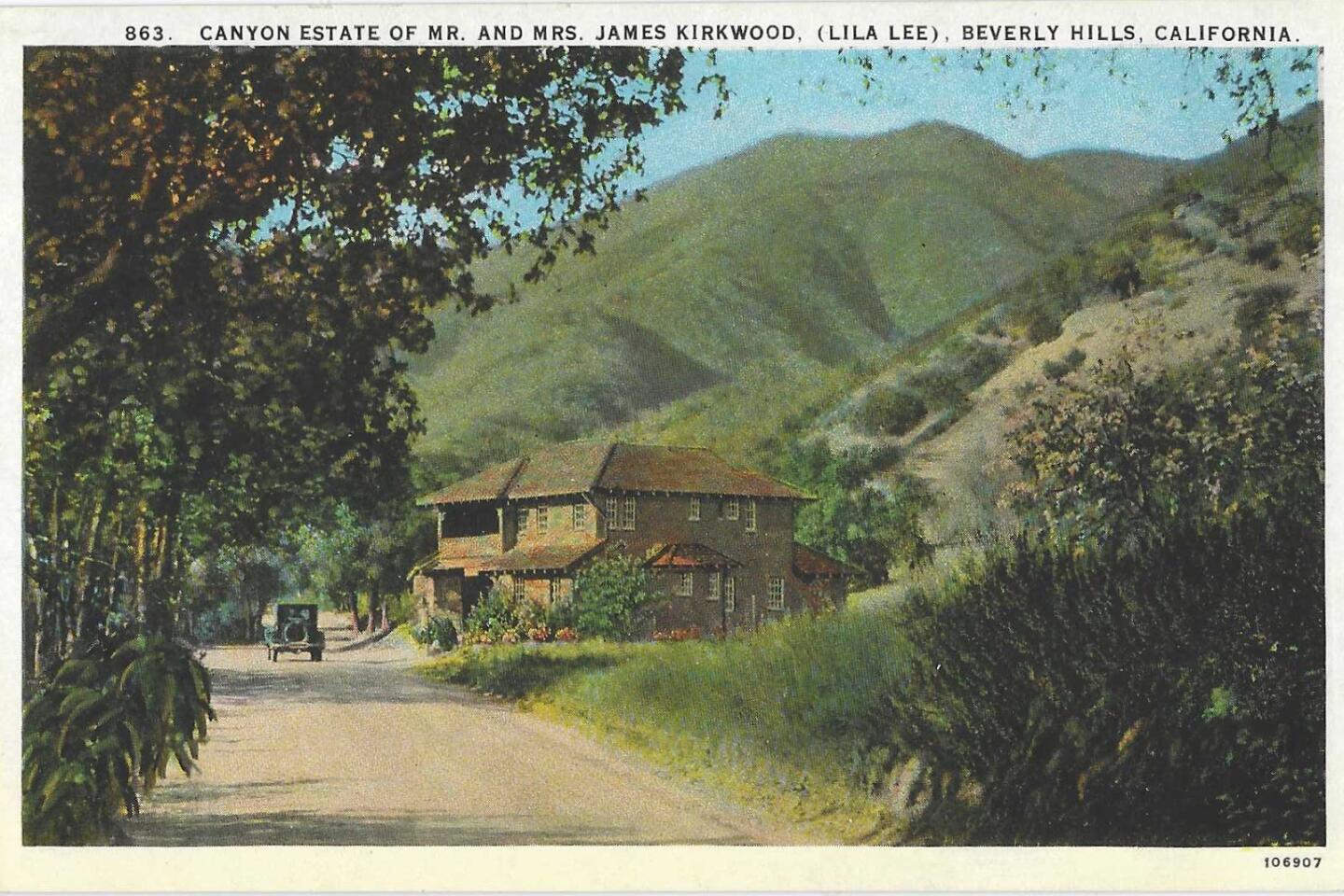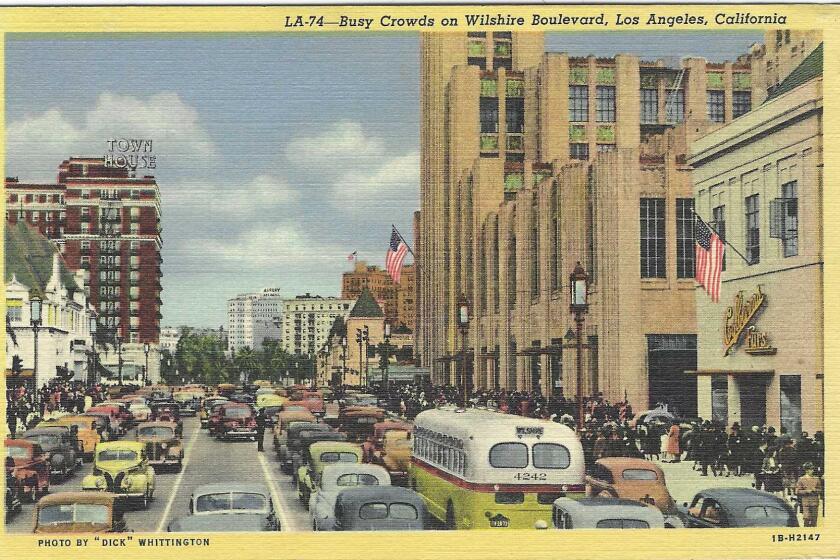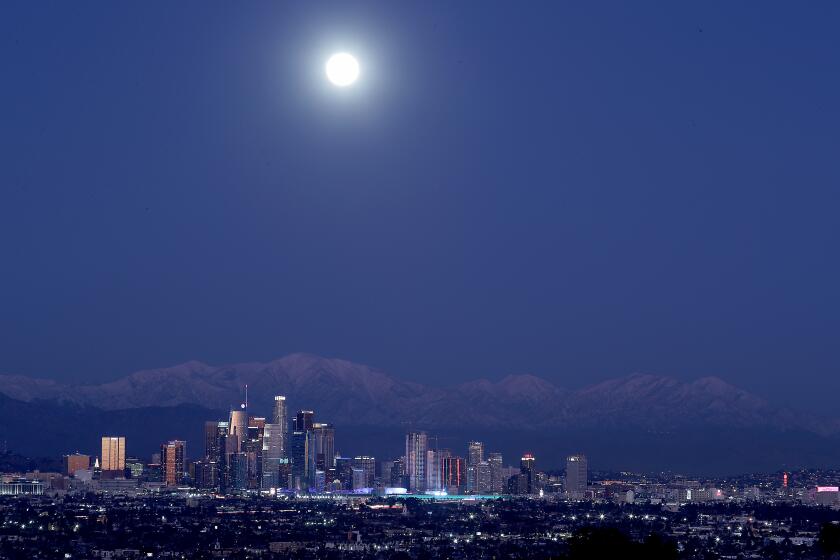Mission Revival, Craftsman, storybook — L.A.’s home styles explained
- Share via
Add to your list of the minor annoyances to blame on COVID-19 the fact that we’ve had to be satisfied with real estate porn of the virtual kind: gazing at shiny houses advertised on shiny paper, or watching drone home tours shot artsily and craftily with wide-angle lenses.
Now, with COVID restrictions abating, here comes the spring itch to buy, to sell, to move out and perhaps up, or at least to spend an entertaining weekend of cruising from open house to open house fantasizing about your new lives within new walls.
You, and generations of Angelenos before you.
If you can afford it (and many can’t, a topic not being dealt with here), the impulse that brought millions to live in Southern California also bequeathed us a landscape ornamented with marvelous houses. Houses as grimly identical as lath-and-plaster clones. Houses as delightfully kooky as a neighborhood designed by Tim Burton by way of Gaudí.
Our home heritage is as multi-everything as Los Angeles itself — historical hybrids of imagination and redwood and whims in stone. In some cities, you make your dull row house distinct with the paint on the door or the flowers in the window boxes. Here, the house itself is singular.
You can drive some neighborhoods — like the flats of Beverly Hills, between Sunset and Santa Monica boulevards — and see them all at once: antebellum plantation mansions and Tudor half-timbered houses across the road from Craftsmans and French chateaux and Mission Revivals. It’s like a studio backlot, every kind of house available to suit the shooting needs of the next movie.
Explaining L.A. With Patt Morrison
Los Angeles is a complex place. In this weekly feature, Patt Morrison is explaining how it works, its history and its culture.
The Federal Writers’ Project was a fine undertaking during the depressed 1930s, but its WPA survey of Los Angeles was archly snotty about our cheerful architectural hodgepodge, the “Moorish minarets sprouting from a Swiss chalet, the Tudor mansion with chromatic Byzantine arches. … Contrasts between the Victorian and the contemporary structure are often ludicrous, as when a constructivist garage rubs rooftops with a grotesque gingerbread castle.” Oh, go soak your stringcourse, WPA.
So as you go out looking for your new burrow or turret, or just think wishfully about it, here’s a bit about our styles and their stories.
FWIW, it’s probably no consolation to your asking-price sticker shock, but this is not our first go-round with housing-price lunacy. In the 1880s, it tiptoed into tulip-bulb-crazy numbers, with even empty lots “flipping” at twice the price in a matter of weeks. L.A. pioneer Horace Bell wrote that a fellow pioneer, overcome with opportunity and optimism, stuck windfall oranges on the spikes of Joshua trees in the Mojave and sold the land to clueless Easterners as orange groves. This place became Hesperia, named for mythic Greek nymphs who guarded a divine grove of “golden apples” — oranges.
Before L.A. was L.A., the Tongva built “kiys,” willow-and-reed domed huts that were built to last only a season or so. There’s a model you can visit at the Los Angeles County Arboretum. The missions and ranchos of the 18th and 19th century were adobe; building lumber was hard to come by, just as it is with today’s pandemic shortages.
Easterners built the foundations of our architectural buffet when they brought their tastes in dwellings with them, whether the style suited the landscape and climate or not. The Greek Revivals and Georgian Colonials of Lexington and Concord were re-created on the streets of L.A., where they stood defiantly apart, wood amidst adobe, Anglo among Californio.
One house type that has endured and been reinterpreted for two centuries is the hybrid Anglo-Californio “Monterey style.” The first, built in 1835 by Boston merchant Thomas Larkin, still stands in Monterey. The clapboard walls of a Monterey house scream “Cape Cod,” yet the long, airy verandas are so, so Californio. You may love it without even knowing that’s what you’re looking for.
One thing you won’t find much of now are Queen Anne Eastlake masterpieces. These fancy and fanciful houses are what can happen when you go nutso with a jigsaw: wooden gingerbread and curlicues and scrollwork and turned balustrades galore.
They once bejeweled Bunker Hill and still can be found in Angelino Heights, L.A.’s first suburb, a time-travel neighborhood of the late 1880s, and in Heritage Square in Montecito Heights, where a precious few of these wedding-cake beauties were moved to and preserved.
But really, what it comes down to is — it’s L.A. If you’re rich enough, or bold enough, you could build whatever you damn well pleased. One of my favorites is a survivor, the Stimson House, a “castle” on Figueroa Street near USC, 130 years old, red stone outside and more than half dozen kinds of wood inside. It’s sturdy enough to have withstood both a blackmailer’s dynamite attack and the depredations of frat boys, who were given the boot and eventually replaced by an order of Catholic nuns.
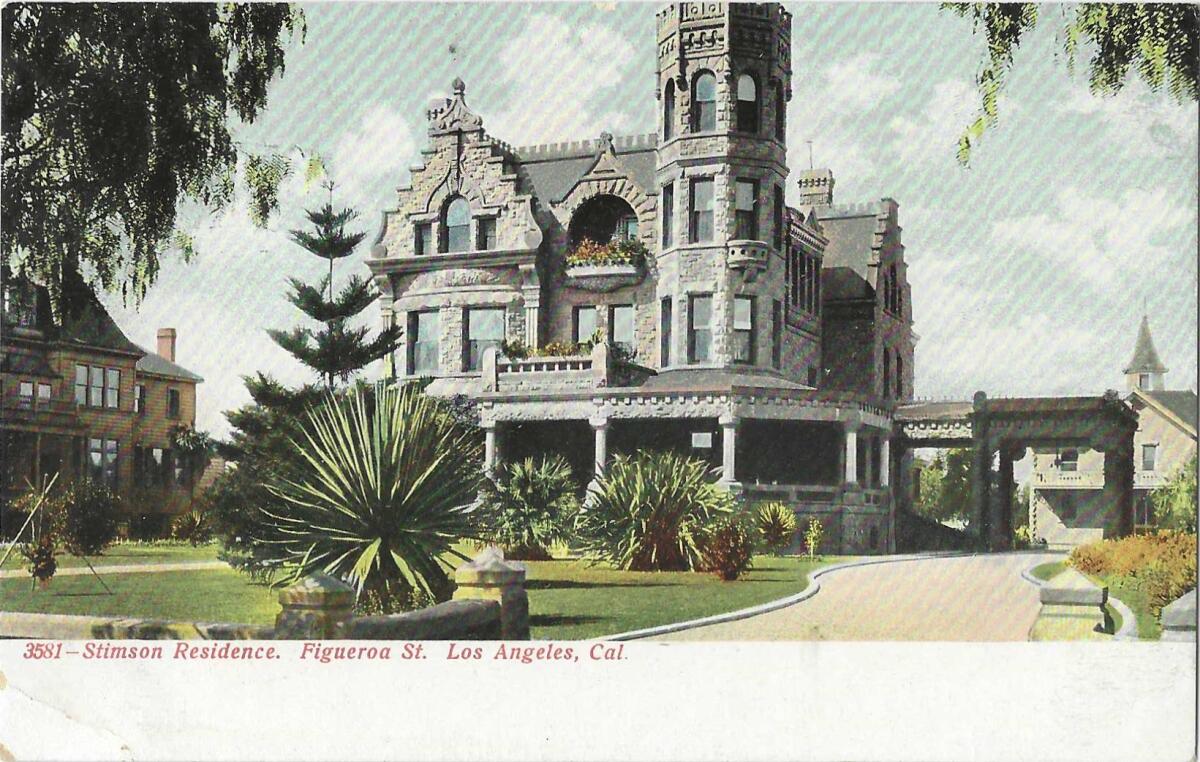
But that kind of house is an outlier, said Paul Gleye, a professor of architecture at North Dakota State University and author of “The Architecture of Los Angeles.” More often, new arrivals got bitten by the Spanish- and Mexican-culture bug, distilled and mythologized for them by the 1884 romantic novel “Ramona,” a kind of Californio “Romeo and Juliet.”
And so they built and bought houses in the Spanish revival and Mission revival styles — whitewashed walls, red-tile roofs, wrought iron, exotic plants (sometimes, like the lofty palm trees, no more native to California than the homeowners themselves).
“You could go wild,” said Gleye. “You could have balconies and verandas and patios and the indoor-outdoor lifestyle” — the kind of California living that would come to grace a thousand magazine covers and entice a million people to the lush L.A. life.
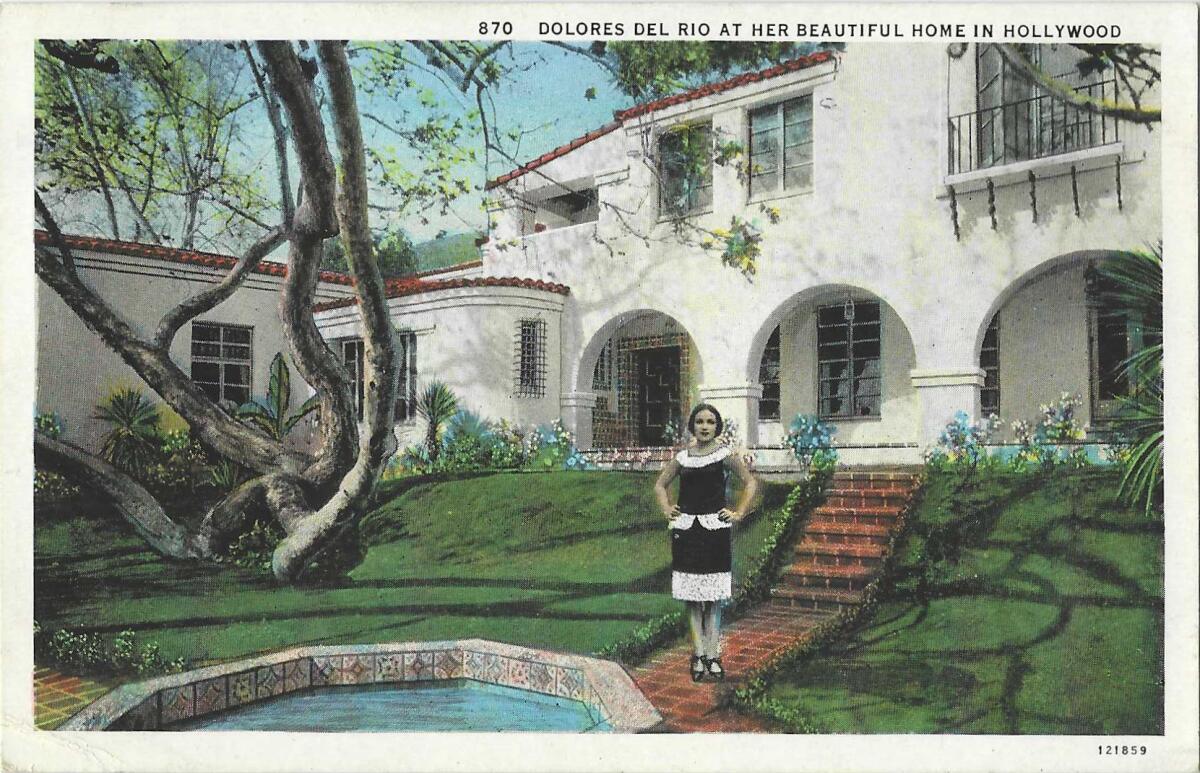
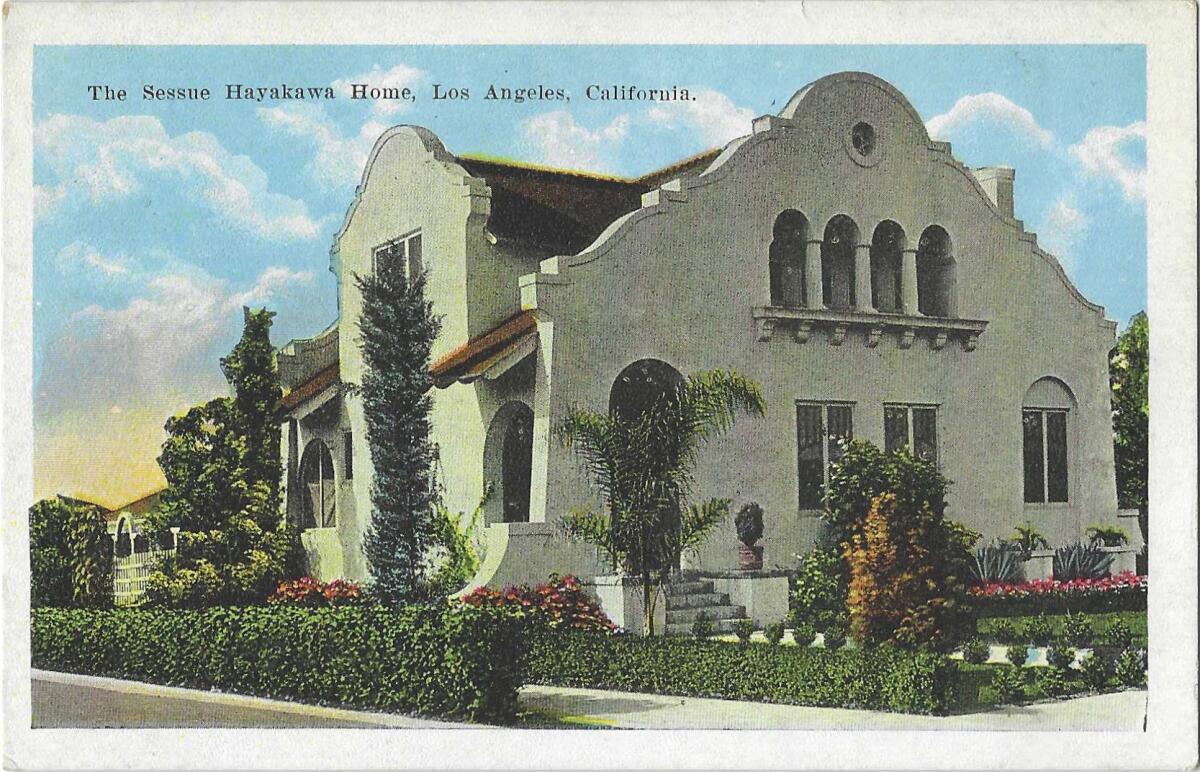
In variants from tiny two-bedrooms to airy mansions, the style lives on in pre-war homes that adorn hillsides from Silver Lake to the sea, like the late actress Dolores del Rio’s 1926 Hollywood home of tile and wrought iron and chalk-white stucco.
The Mission Revival style in particular lasted only maybe a quarter-century, until World War I. To my way of thinking, it is not attractive, with that arched roofline like a dromedary’s hump. The Times’ first publisher’s house, on Wilshire Boulevard, was a Mission Revival building that was turned into the first home of the Otis Art Institute.
For a time these houses were hotter than a tar roof, and then you could hardly give them away. The Otis building was bulldozed in 1954. The Hollywood Hotel, a massive Mission Revival place, was demolished two years later.
If your tastes run to the brick houses of the East and Midwest — you may have to go east to find them. Unreinforced masonry and seismic California are a dangerous duo. One serious shake — like the 1933 Long Beach quake, whose destructiveness changed building codes — and brick buildings tumble down as easily as the sugar-cube California mission models that schoolkids used to assemble in fourth grade.
Some of the most amusing hate mail I’ve ever gotten was from choleric New Yorkers in 1998. Timed to the last episode of “Seinfeld,” my column was about the fact that the exterior of Jerry’s apartment building was not in Manhattan but was a building in L.A.’s Koreatown. You can see the earthquake retrofits all over it.
When it came to L.A. houses, let a thousand floorplans bloom.
Architecture has its own evolution; there are always dead ends. Some of them remain — think of our bits of Neanderthal genes — but they just aren’t contributing much to the gene pool, such as the 1920s craze for storybook cottages. You can see them on the streets of older cities like Glendale and Long Beach, looking for all the world like the front door will spring open, and seven dwarfs will head off to work in their diamond mines.
The most stupendously delightful of these is the hundred-year-old Ward Lascelle house in Beverly Hills, named the “Witch’s Cottage” for reasons that are obvious.

One home style that’s flourished on the architectural evolutionary tree is the Craftsman bungalow, as identifiably Southern California as the Hollywood sign. The most sublime and costly of these is the gem-perfect Gamble House in Pasadena, but thousands of California bungalows fill neighborhoods and towns like South Pasadena. At their best, the bungalows appear to arise from the landscape, in hunkered-down lines with deep, cool porches and stone and wood materials whose own superb construction is ornament enough.
The Craftsman’s offspring is the Midcentury Modern post-and-beam home: airy and open, of substantial wood (compared to “stick” homes — sounds like “The Three Little Pigs,” doesn’t it?), with the workmanship its own adornment. Post-and-beam has been hip for decades. It’s a shorthand description you see in the real estate enticements that land in your mailbox.
Frank Lloyd Wright built at least half a dozen L.A. houses, some in a style called “Mayan Revival.” But the R-1 revolution was delivered by two men from Vienna whose work straddled World War II and bestrode L.A. residential architecture: Richard Neutra and Rudolph Schindler. Their homes, and knockoffs of them, have been definitive L.A., machines for living, dissolving again the distinction between indoors and outdoors, and once attainable by people of middling means. (Neutra designed a small Pacific Palisades house for a college professor of mine and his wife, an author. In mid-design process, they told the architect they were going to have a baby, and Neutra, they told me, threw a fit, because this upset his design plans for two adults.)
Most fantastic of all are the hillside houses made possible by engineering and genius design. Pierre Koenig’s Case Study Houses are like angular clouds of glass and light and air, floating above the glittering landscape. And John Lautner’s 1960 “Chemosphere” house, which I have visited, is a miracle of invisible engineering and visible imagination.
Angelenos can be spotted a mile away in other locales, waiting for the walk sign while locals jaywalk with abandon. What’s that about? And what happens when people do jaywalk here?
Now we come to one major distinction between houses and homeowners’ tastes and places: hillside houses and flatland houses. Topographically, Los Angeles is a very rumpled place, and construction from the early Hollywoodland development to now has had to adapt to terrain and technology.
But on the flats, it’s Katie, bar the door. Which brings us to the San Fernando Valley, once the place of ranchos and fields and farms, and a blank slate for thousands of houses. In his book “Granada Hills,” Jim Hier reproduces a 1926 tract plan for the new town, with hundreds of lots of different sizes on yardstick-straight streets marked with the ages and types of orange trees (“5-year-old Valencia”).
In May 1945, one day after the war in Europe ended, business partners announced the planned community of Panorama City, perfect for homecoming servicemen. Kevin Roderick, in his book “The San Fernando Valley: America’s Suburb,” notes how the designer labored to avoid cookie-cutter neighborhoods — like the Granada Hills plan — by varying rooflines, curving streets and painting houses in distinctive pastels.
Some years ago, I called up the renowned architectural historian, the very funny Robert Winter. I was writing about the differences between L.A. and Orange County. What, from his design POV, were they? You could practically hear the man shudder over the phone. He was thinking of Irvine-like planned communities, rows of half-begotten Spanish-y houses and condos of red tile roofs over white stucco walls. “Orange County,” he said, “looks like dentures.”
The Valley had no better salesman than Bing Crosby and his 1944 song “San Fernando Valley,” which made a little California tract house with its own little nuclear family something the fighting man could yearn to come home to. “Nobody,” said Roderick, “sang songs about Lakewood or Westchester.”
Oh, but Lakewood — the massive planned development, the Levittown of the Pacific, some 17,000 houses on onetime bean fields — does have its own poet, D.J. Waldie. He still lives in his parents’ 957-square-foot Lakewood home and wrote “Holy Land: A Suburban Memoir,” an unsparing look at his parents and the place they chose to live.
The houses aren’t architecturally notable. They haven’t the scaled-down pretensions of two-bedroom mock-Spanish haciendas. Lakewood was crafted out of whole cloth beginning in 1949, wartime energy and efficiency flipped to producing modest, serviceable houses for men and women of modest means, those of the Greatest Generation who never imagined they could be homeowners with yards and garages and maybe even swimming pools. It may be a soulless landscape to some, but in Southern California, to its pilgrims, a house of one’s own is a holy land indeed, even to this day.
L.A. is a place like no other. You’ve got questions. Patt Morrison probably has answers and can definitely find out.
More to Read
Sign up for Essential California
The most important California stories and recommendations in your inbox every morning.
You may occasionally receive promotional content from the Los Angeles Times.
